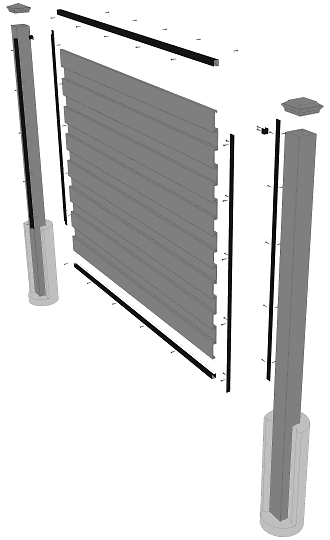Do horizontal fences sag?
Horizontal fences are more likely to sag than vertical ones if the boards are not properly supported. Most horizontal fences have spans of approximately 6 to 8 feet between posts, so the horizontal boards do not have support in between. That's why it's important to choose a horizontal fence design that has the necessary support to avoid sagging. For example, Horizons, a horizontal fence that combines Trex composite components with a metal frame from FDS, has two design factors to help reduce sagging and bowing. The Horizons frame system connects the top and bottom to sturdy metal rails while the pickets are secured between two vertical rails on each side. The pickets themselves interlock reducing mobility and helping to keep the shape of the fence. Horizontal fences that do not have this type of support are more prone to sagging and should be avoided. This is true not just for wood but for horizontal fences that are made from composite decking boards as opposed to the composite fencing boards used in Trex fence systems. That is why FDS designed the Horizons frame system in onjunction with Trex's composite fencing components rather than decking boards. Visit Trex Horizons to learn more about the advantages and virtues of our horizontal fencing.

The Horizons frame system is designed to resist sagging for horizontal Trex fences.